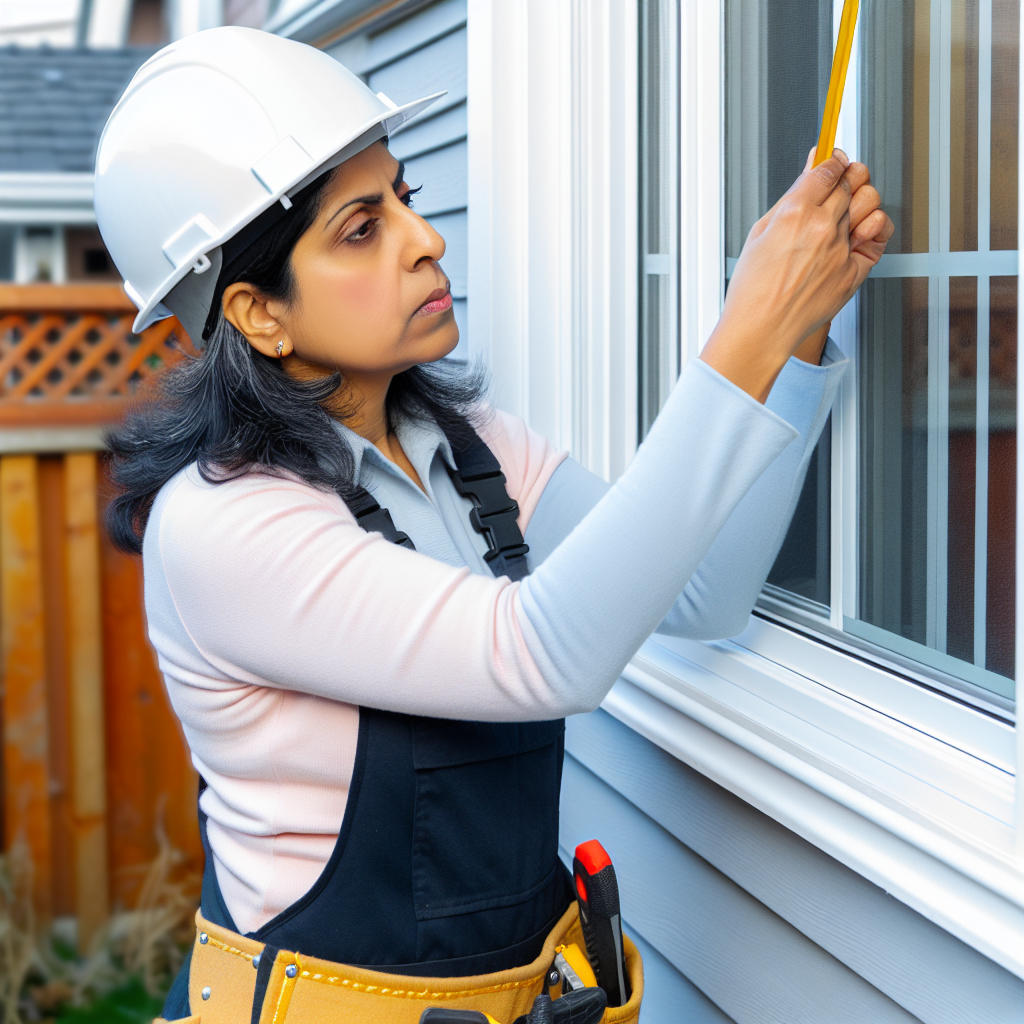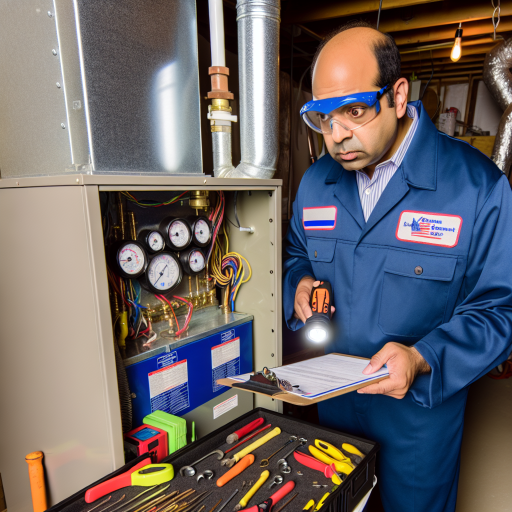Introduction to Home Inspection
Home inspection is a vital step in the property purchasing process.
This process ensures that potential buyers understand the condition of their future home.
Among various elements, windows and insulation play crucial roles.
They significantly impact energy efficiency and comfort levels.
Moreover, proper windows and insulation can save homeowners money over time.
Importance of Windows and Insulation
Windows provide natural light and ventilation in living spaces.
They also protect against weather elements when properly sealed.
Insulation regulates indoor temperatures by reducing heat transfer.
This balance leads to a comfortable living environment year-round.
Proper insulation can also prevent ice dams and frost formation.
Consequently, both windows and insulation contribute to energy efficiency.
This efficiency is increasingly important in today’s eco-conscious world.
Overall, quality windows and insulation enhance the home’s resale value.
A thorough inspection of these elements is essential.
Types of Windows: Pros and Cons for Home Inspections
Vinyl Windows
Vinyl windows provide excellent insulation and energy efficiency.
They also resist moisture, preventing mold growth.
However, they may not be as durable as wood over time.
Wood Windows
Wood windows offer classic beauty and can enhance home value.
They provide good insulation but require regular maintenance.
Additionally, they can be prone to rot if not properly cared for.
Aluminum Windows
Aluminum windows are lightweight and durable, making them popular.
They are less expensive than other materials.
However, they may not provide the best insulation, leading to higher energy costs.
Fiberglass Windows
Fiberglass windows are strong and have excellent insulation properties.
They expand and contract similarly to the framing materials around them.
Nonetheless, they come at a higher upfront cost.
Comparative Overview
- Vinyl: Great insulation, low maintenance.
- Wood: Aesthetic appeal, higher upkeep.
- Aluminum: Affordable, less insulation.
- Fiberglass: Strong, excellent insulation, pricey.
Considerations for Home Inspectors
Inspectors should assess the condition of each window type.
Look for signs of wear, moisture damage, or air leaks.
Understanding these factors helps evaluate the overall quality of insulation.
Visual Inspection Checklist for Windows
Assessing the Exterior
Start by examining the window frames for any signs of damage.
Check for cracks in the wood, vinyl, or metal materials.
Inspect the caulking around the edges for any gaps.
Poor caulking may lead to water intrusion.
Look closely at the glass for cracks or chips.
Damaged glass can reduce energy efficiency.
Ensure that all windows open and close smoothly.
Evaluating Seals and Weatherstripping
Examine the weatherstripping for wear and tear.
Check that it creates a tight seal when closed.
Look for any areas where air might escape.
Good seals are crucial for insulation quality.
Test for drafts by running your hand along the edges.
Checking for Moisture Damage
Inspect the interior of the windows for signs of moisture.
Look for water stains or discoloration on the walls.
Mold growth near windows indicates potential leaks.
Check the window sills for soft or rotting wood.
Moisture can lead to bigger structural issues over time.
Assessing the Window Functionality
Open and close each window to ensure functionality.
Check that locks operate smoothly and securely.
Look for any resistance or difficulty while operating.
Consider replacing windows that do not operate well.
Reviewing Energy Efficiency
Examine the type of glass used in the windows.
Energy-efficient windows often have special coatings.
Check to see if the windows are double or triple-paned.
Inquire about the age and insulation ratings of the windows.
Older windows may need upgrading for better efficiency.
Delve into the Subject: How To Plan For Long-Term Costs As A First-Time Homebuyer In The USA
Thermal Performance Evaluation
Assessing Insulation Quality
Insulation quality plays a critical role in determining energy efficiency.
Start your assessment by examining insulation material types.
Common materials include fiberglass, cellulose, and spray foam.
Each type offers different thermal resistance properties.
Next, check the insulation installation quality.
Look for gaps, compression, or misalignment during your inspection.
These factors can significantly reduce insulation effectiveness.
Then, evaluate the insulation’s overall condition.
Signs of moisture or mold can indicate serious issues.
Moisture can compromise insulation performance drastically.
Additionally, consider the insulation’s R-value.
The R-value measures thermal resistance and effectiveness.
A higher R-value indicates better insulating properties.
For different climate zones, the recommended R-values vary.
Consult local building codes for guidance on R-value requirements.
Subsequently, assess the cover around the insulation.
Ensure that it meets the manufacturer’s specifications.
Improper covering can lead to thermal bridging, affecting efficiency.
Evaluate any signs of pest infestations around the insulation.
Rodents can cause damage and create thermal gaps.
Pay attention to any unusual noises or odors during your inspection.
They might indicate deteriorating insulation materials.
Moreover, review the window insulation status.
Check if windows are double or triple glazed for better thermal efficiency.
Look for drafts or seal failures around window frames.
Proper sealing enhances the effectiveness of insulation systems.
Lastly, consider conducting an infrared thermal scan.
This can reveal hidden areas of heat loss and poor insulation.
Utilizing this technology can provide thorough insights into insulation quality.
Explore Further: What To Know About HOA Fees As A First-Time Homebuyer In The USA
Common Issues Found in Windows
Seals
Window seals play a crucial role in energy efficiency.
Worn or damaged seals lead to air and moisture leaks.
Check for any visible gaps or cracks in the seals.
Additionally, look for fogging between double panes.
This may indicate a seal failure requiring replacement.
Frames
Window frames must be structurally sound to function properly.
Inspect frames for signs of warping or rotting.
Wood frames are especially susceptible to decay.
Vinyl frames can also suffer from UV exposure damage.
Ensure that frames fit snugly within the opening.
Glass Quality
Examine the glass for any chips or cracks.
Such imperfections can compromise insulation quality.
Check for discoloration or haziness in the glass.
These issues may indicate seal failure or age-related damage.
Consider having the glass replaced if necessary.
Explore Further: Home Inspection Checklist For Identifying Common Seller Repairs

Insulation Types: Understanding Fiberglass, Foam, and Cellulose
Overview of Insulation Types
Insulation plays a crucial role in maintaining home energy efficiency.
Different types of insulation address specific needs.
Understanding their characteristics helps in making informed choices.
Fiberglass Insulation
Fiberglass insulation consists of tiny glass fibers.
It is lightweight and resistant to moisture.
This type provides excellent thermal resistance.
Moreover, it is easy to install in various spaces.
However, ensure proper safety gear when handling it.
Advantages of Fiberglass
- Cost-effective compared to other options.
- Non-combustible and does not produce harmful fumes.
- Available in batts, rolls, and loose-fill forms.
Considerations for Fiberglass
- Can be less effective if not installed properly.
- May require professional installation for complex areas.
- Can irritate skin during installation without proper protection.
Foam Insulation
Foam insulation comes in rigid panels and spray form.
This type offers high insulation value with minimal thickness.
It can fill cavities and seal leaks effectively.
Foam also serves as a moisture barrier.
Consequently, it helps prevent mold growth.
Advantages of Foam
- Provides superior air sealing properties.
- Reduces energy costs significantly over time.
- Resistant to pests and moisture damage.
Considerations for Foam
- Higher upfront cost than fiberglass options.
- Requires professional installation for best results.
- Some types may emit VOCs during installation.
Cellulose Insulation
Cellulose insulation consists of recycled paper products.
This eco-friendly option is treated for fire resistance.
It is often blown into wall cavities and attics.
Cellulose can effectively reduce air leaks.
Additionally, it offers good soundproofing qualities.
Advantages of Cellulose
- Made from renewable resources.
- Typically more affordable than foam insulation.
- Offers excellent energy savings over time.
Considerations for Cellulose
- Can settle over time, reducing effectiveness.
- May attract pests if not treated properly.
- Installation may require specialized equipment.
Discover More: Navigating Legal Obligations Through A Comprehensive Home Inspection Checklist
Air Leakage Tests: Methods to Identify Gaps in Windows and Insulation
Understanding Air Leakage
Air leakage significantly impacts energy efficiency.
It occurs when outside air enters or conditioned air escapes a building.
This issue often leads to increased energy costs and discomfort.
Common Methods for Testing Air Leakage
Several methods exist to identify air leakage around windows and insulation.
Using these techniques can help homeowners restrain energy loss effectively.
Visual Inspection
Begin with a thorough visual inspection of windows and insulation.
Look for gaps, cracks, and signs of wear.
Pay close attention to areas around frames and seals.
Hand Test
The hand test is a simple yet effective method.
Lightly run your hand around the window edges.
If you feel drafts, that indicates potential air leakage.
Smoke Pencil Test
The smoke pencil test provides a visible demonstration of airflow.
Light a smoke pencil near windows or insulation seams.
Observe the smoke movement; swirling indicates gaps.
Blower Door Test
The blower door test is a comprehensive assessment method.
This technique involves using a fan to depressurize the home.
It identifies leaks by measuring airflow and pressure differences.
Infrared Thermography
Infrared thermography detects temperature differences effectively.
Use an infrared camera to visualize heat loss through insulation.
This method reveals hidden leaks not visible to the naked eye.
Sealing Air Leaks
Once you’ve identified air leaks, prioritize sealing them.
- Use caulk for small gaps and cracks.
- Apply weatherstripping around windows and doors.
- Consider professional insulation services for larger areas.
Sealing gaps enhances energy efficiency significantly.
Regular Maintenance
Regular maintenance of windows and insulation prevents air leakage.
Schedule periodic inspections to identify potential issues.
Maintain the integrity of seals and insulation materials actively.
Safety Considerations
Ensuring Safe Access During Inspection
Home inspections require safe access to all areas, especially windows.
Start by assessing your personal safety gear.
Wear safety goggles and gloves for protection.
Ensure that your ladder is stable and secure before climbing.
Always position the ladder on firm ground.
Consider using a spotter to hold the ladder for extra safety.
If you’re inspecting high windows, use an extension pole instead.
Be cautious of any overhead power lines near your inspection site.
Take note of weather conditions before proceeding with the inspection.
Avoid inspections in inclement weather that could pose risks.
Preparing the Inspection Area
Clearly mark the area where you will be working.
Dispose of any debris or obstacles in the way.
This preparation will enhance visibility and safety.
Set up warning signs to alert others of your work zone.
Maintain a clear pathway for easy access to the inspection area.
Keep the area well-lit to identify potential hazards.
Utilizing Proper Tools
Use appropriate tools designed for window inspection tasks.
A window inspection tool can simplify your process.
Check your tools regularly for wear and tear.
Ensure that all equipment is in good working order.
Store tools safely when not in use to avoid accidents.
Emergency Preparedness
Prepare for emergencies by knowing your exit routes.
Keep a first aid kit readily accessible during inspections.
Familiarize yourself with emergency contact numbers.
Be aware of potential hazards specific to the location.
This knowledge enhances your ability to act quickly if needed.
Additional Resources
What do you wish you had looked for during inspection when buying …




